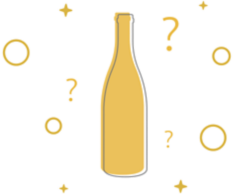Sémillon can be amazing or average. It all depends on how winemakers treat it in the vineyard and winery. Clone and site matter, as do yield size and vinification.
Light- to medium-bodied, with trademark waxiness, Sémillon’s aromas include hay, white flowers, and lemon in youth. Those notes turn honeyed and toasty with age. It stars in white blends worldwide, especially alongside Sauvignon Blanc in the classic white wines of Bordeaux.
As a varietal wine, however, Sémillon is capable of stylistic acrobatics of balance and tension.
From sublime French dessert wines to dry and bright Australian bottles, Sémillon has incredible range when done right.
Sémillon is deep and complex. Eager to understand all the grape has to offer? Here’s a style guide to Sémillon around the world.
France
Sémillon is most known for its work at home in France, where it partners with Sauvignon Blanc and Muscadelle to create sweet wines from Sauternes and Barsac. To produce these wines, humid conditions are key. A fungus, Botrytis cinerea, grows on the fruit, and the resulting “noble rot” concentrates the sugars, flavors, and acids as the grape shrivels.
Small quantities of luscious, oak-aged wine reveal flavors of honey, apricot, spice, saffron, and smoke.
In Bordeaux, winemakers have long made dry Sémillon expressions, too. A typical white wine includes Sémillon, Sauvignon Blanc, and sometimes Muscadelle. Simple, fresh expressions hail from Entre-Deux-Mers, where they are typically aged in stainless steel.
Sémillon is also included in the dry, oaked, and ageable whites of Graves and Pessac-Léognan. Such wines are stars in the firmament of Bordeaux: full-bodied, creamy, and capable of aging for decades.
One trend to watch is the move toward making dry whites in traditionally sweet regions.
There’s an increase in Sémillon-based wines, both blended and single varietal, in the south that illustrate this trend.
Much like Malbec’s emigration from Old World to New, Semillon, as it’s spelled without the accent Down Under, has established roots abroad. Though the grape grows broadly across the country, three regions have distinctive styles.
In the cool climate of Western Australia’s Margaret River, Semillon lends weight to dry, crisp Bordeaux-style blends. In South Australia’s warmer Barossa Valley, old bush vines produce waxy, riper, fuller-bodied versions, often aged in barrels.
Meanwhile, many producers from Hunter Valley in New South Wales eschew oak and pick Semillon early for a dry, bright, lemony profile that’s low in alcohol, typically 10–11.5% alcohol by volume (ABV).
After six years in the bottle, the wine takes on flavors of toast, smoke, and honey. It’s unique and can evolve for a decade or more.

South Africa
Accounting for more than 90% of South Africa’s wine grape production by the 1820s, Sémillon took a backseat to trendier grapes like Chardonnay and Chenin Blanc after the phylloxera epidemic devastated vineyards in the 1880s. A quota system introduced in the 1950s further diminished the grape’s stature.
Today, styles vary from dry and fresh, to sweet and rich. One rarity largely particular to South Africa is Sémillon Gris, a mutation also called “red” Sémillon for its pink-skinned grapes. And several small producers feature Sémillon Gris and old-vine Sémillon.
Though not widely planted in the U.S., Sémillon grows in Washington State and California. In Washington’s Columbia Valley, long warm days ripen the fruit, while brisk nights help with acid retention. Producers can achieve a rich, complex profile without sacrificing freshness. Typical aromatics include lemon, honeysuckle, and orchard fruits.

